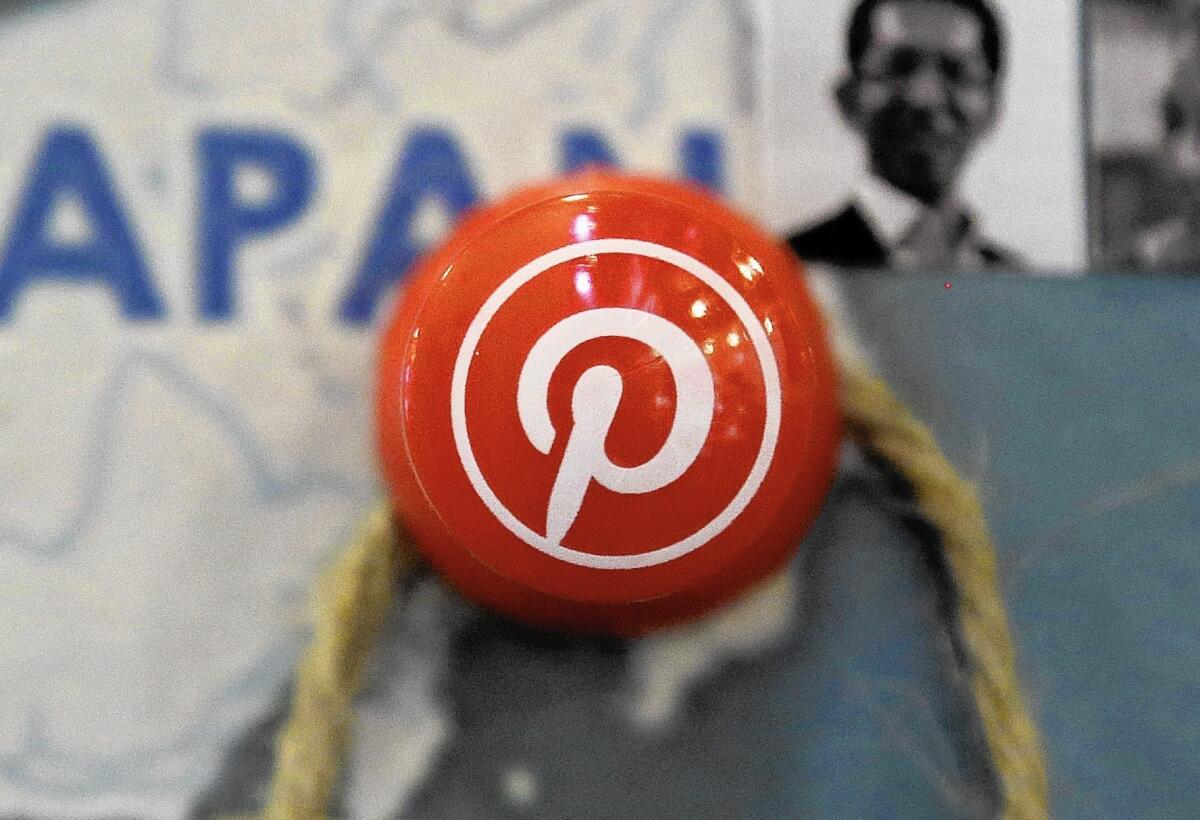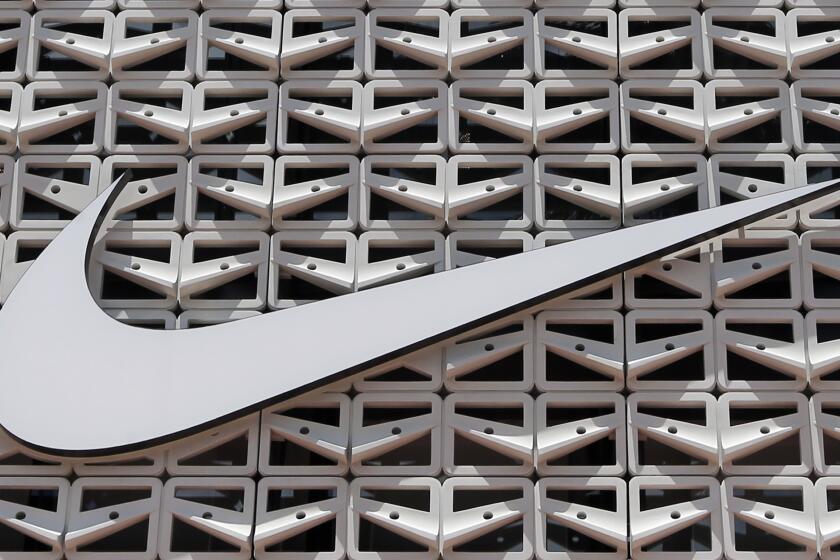Pinterest adds Buyable Pins, Instagram more advertising

A pin signifies Pinterest’s Japan offices on a map at the company’s headquarters in San Francisco.
SAN FRANCISCO — Behind the billions of images posted on Pinterest and Instagram, there’s money to be made.
The companies, two of the most popular online communities, announced big moves Tuesday to commercialize their brands.
Pinterest, the 5-year-old digital pinboard start-up, is getting into the e-commerce game by providing a way for users to directly buy items pinned on the site.
Facebook-owned Instagram, meanwhile, announced that it was increasing its advertising efforts by allowing a wider variety of companies to place ads, improving its targeted advertising tools and testing ads that users can click on to buy products.
Neither announcement was that surprising given the stiff pressure on tech companies — particularly those whose core products are free to users — to build a sustainable business on the backs of tweets, pins, videos, posts and snaps.
“You have to make money,” said Rob Enderle, principal analyst of the Enderle Group. “It shows you have staying power.”
With 70 million monthly active users and 50 billion pins across 1 billion boards, Pinterest has quickly built enormous clout in the social media world, making the rollout of Buyable Pins a logical next step.
“What’s next for Pinterest?” co-founder and Chief Executive Ben Silbermann said during the announcement at Pinterest’s headquarters in San Francisco. “Whenever we have to face that question, we talk to pinners. People want to buy things on Pinterest.”
Buyable Pins, he said, are a “simple and secure way to buy the products you love from within Pinterest.”
By the end of the month, users will begin to see small blue price tags on certain pins as they scroll through their Pinterest feeds.
Tapping on the pin will bring up the price, color and size options and a product description, as well as the ability to swipe through additional images. Tapping on a button in the top right will enable the user to purchase the product, which can be done with a credit card or Apple Pay.
The order and payment are securely forwarded to the retailer, which will send the customer a confirmation and deliver the product. There’s no fee for the pinner or for the merchant.
Previously, users were only able to view the images and would have to leave Pinterest to search for those items if they wanted to buy them.
The new feature could “definitely be a game changer” for Pinterest and retailers, said Bob Gilbreath, co-founder of marketing firm Ahalogy, which specializes in digital marketing on the discovery platform.
“What Pinterest has had forever that hasn’t been noticed is people are already using it to buy things,” he said. “It’s actually more of a search media than a social media.”
Competitor-wise, Pinterest is closer to Google than Facebook or Twitter, he said, so adding a buy button is a “great way to close the sale” on millions of pins that are already posted every day. It essentially creates an all-in-one ecosystem where people can discover things they like and buy them without ever having to navigate away from Pinterest.
E-commerce analysts stopped short of describing Pinterest’s new feature as a threat to the likes of Amazon and Google, but Linda Bustos, the director of e-commerce research at research firm Elastic Path, said Pinterest could help make the discovery playing field more even.
Product merchants currently rely heavily on Google’s search prioritization to get noticed, and getting good placement on a search results page can often make or break a business. With the launch of Buyable Pins, merchants will be able to diversify their marketing, making it “less risky for the retailer” and giving smaller brands a shot, she said.
“On Pinterest, because things are so visual, it could help smaller retailers,” Bustos said. “A customer may have never heard of your brand, and they don’t really care, because they see the image and they like it.”
There will be 2 million buyable products at launch. Macy’s, Nordstrom, Neiman Marcus, Cole Haan and Kate Spade are among the launch partners.
Interestingly, Pinterest is not taking a cut from any sales made, which will serve to lower the barrier to entry for merchants. With more retailers on the platform, Pinterest can then use it as leverage to get them to pay for Promoted Pins, which are pins that receive better placement.
The commerce feature has the potential to be an enormous hit given how many pins there are on Pinterest and how devoted many users are to the fast-growing site. Pinterest said the number of pins on the site is growing 75% year over year.
Another advantage is that most Pinterest boards are aspirational, so many boards already double as wish lists. With Buyable Pins, Pinterest is removing some of the friction between coveting something and actually buying it.
The company, citing data from research firm Millward Brown, said 93% of active pinners said they use Pinterest to plan for purchases, and 87% said they’ve purchased something because of Pinterest.
For now, the feature will be available on mobile only and will launch on the iPhone and iPad. Other operating systems and platforms will come later. Pinterest said 80% of its users access Pinterest through a mobile device.
Whereas many people have long hoped for a buy button on Pinterest, the addition of more ads on Instagram may rankle some users.
In a blog post, Instagram, which launched ads a year and a half ago, said it would make Instagram ads available “to businesses of all types and sizes.”
“We’re excited to bring Instagram ads to more advertisers,” the company said. “Businesses are important members of our community and we look forward to learning what works together.”
Instagram said the new ads would serve more than just businesses. It will experiment with ways for users to take action directly from an ad, such as by enabling them to sign up on a website, buy a product or download an app.
The company said it would begin testing some of those “direct-response formats” in the coming days.
Some users might not like the intrusion of buy buttons and more ads, but that’s the nature of running a successful tech company, said Nate Elliott, principal analyst at Forrester.
“This is what businesses do,” he said. “For all the bluster about how we’re here to connect and serve the world, it’s business.”
Twitter: @traceylien
Twitter: @byandreachang
Lien reported from San Francisco and Chang from Los Angeles.
More to Read
Inside the business of entertainment
The Wide Shot brings you news, analysis and insights on everything from streaming wars to production — and what it all means for the future.
You may occasionally receive promotional content from the Los Angeles Times.












